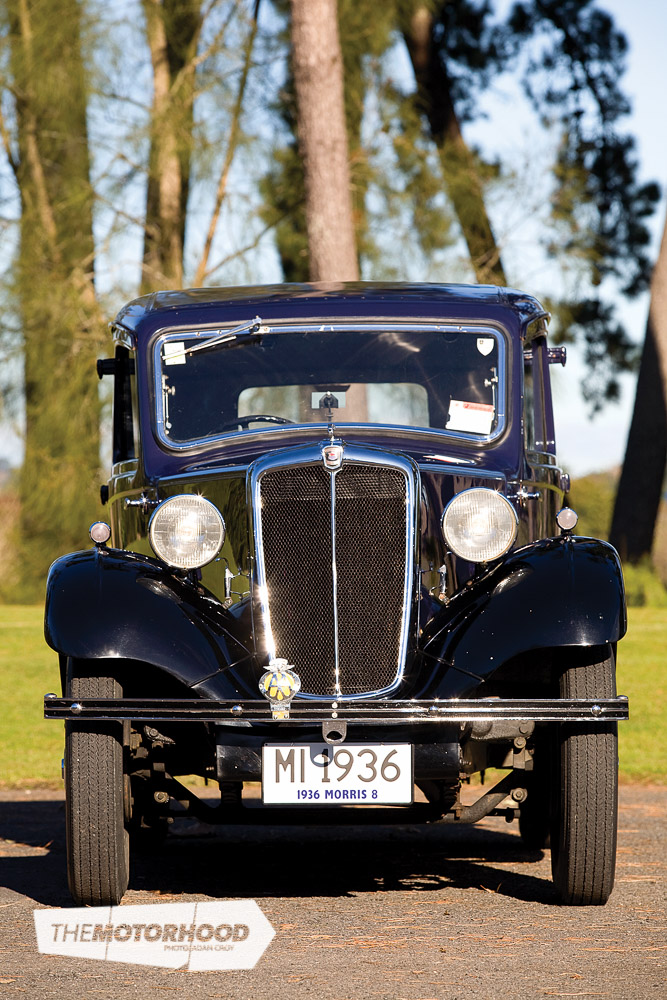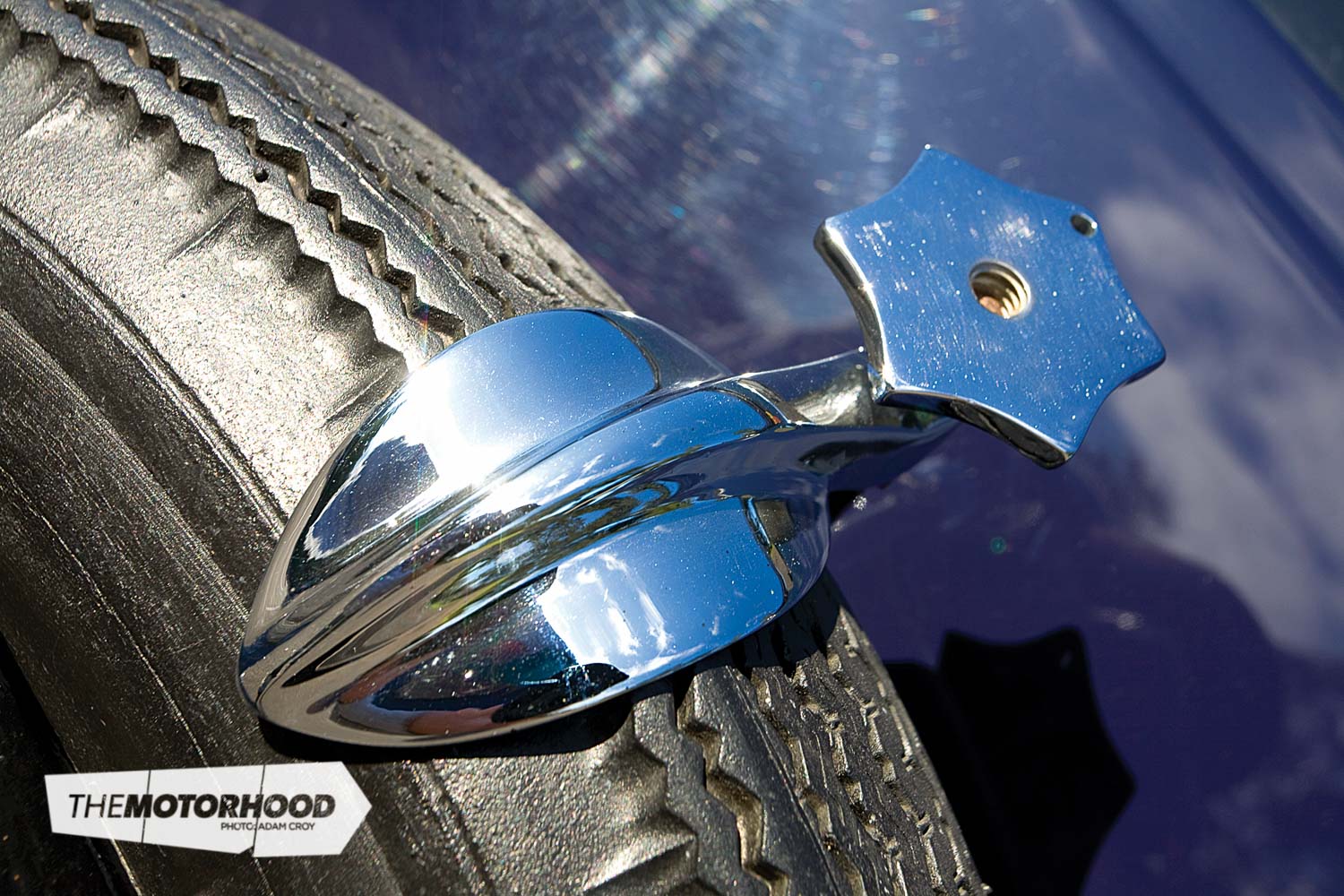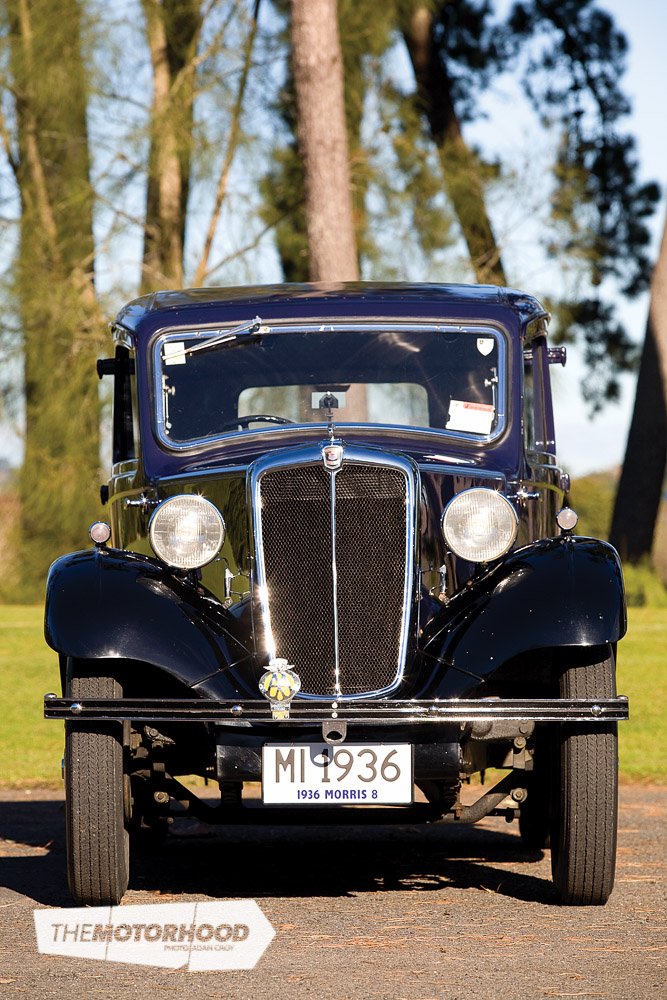
data-animation-override>
“The Morris 8 was the most successful of all the pre-war Morris cars, and the one which helped lift Morris Motors out of the depression years ”
In fact by July 1935, only nine months after its introduction over 50,000 Morris 8s of all body types had been sold. This success continued regardless of competition from other small car manufacturers, including the Ford 8hp saloon, which was reduced a whopping £10 at the Ford Motor Show in October 1935, with Ford boasting that it manufactured the only £100 saloon car in Great Britain. It carefully included the word ‘saloon’ in this statement, remembering that a Morris Minor two-seater had been available for the same price during 1931-’33, and Austin’s £100 two-seater, the Austin Seven Opal, was already on the market.
Morris produced a range of models during the 1930s, from the Minor (later the 8) including roadsters, tourers, coupés, and saloons – with and without sliding roofs and two or four-doors – sports cars, and a myriad of specials.

A completely new 918.6cc side-valve engine, type UB with a three-bearing crankshaft, had been designed for the Morris 8 and a proprietary Borg & Beck single dry-plate clutch was introduced for the first time. Subsequently, there were other body builders, such as Australian manufacturers who constructed their own bodies on Morris running chassis.
The chassis frame design of the 8 was unconventional for Morris in that the side members were reversed, exposing the open portion outwards to the elements. Unfortunately, this was to prove a water trap and make the car prone to rusting, especially around the wheel arches. Despite this, the Morris 8 has survived in quite large numbers, with many fine examples of most models, possibly more than any other make/model, still being enjoyed by enthusiasts and classic car buffs around the world today.

During the 1930s, all Morris cars were coach built, which meant that a wooden framed body with metal panels was attached and mounted on a separate chassis. From its early inception, the designers of the Morris 8 took ergonomic factors into account using an adjustable skeleton body, which allowed them to experiment with seating positions and steering rake for average-size people. This approach of building a chassis to suit the body, rather than the reverse, eventually paid off for Morris.
The first unitary-constructed Morris was the 1938 Morris 10 Series M, which was constructed in a series of pressed steel panels, systematically welded together to form an integral one-piece chassis and body combination, not unlike contemporary cars. The Morris 8, which was introduced in 1935, updated in 1936 (series 1), 1937 (Series 2) and 1938 (series E) proved to be the most popular car prewar, which was probably due to the fact that it was fitted with superior Lockheed hydraulic brakes and other advanced features the competitors at the time failed to introduce until after the war.

Acquisition
Morris Motors gradually acquired Wolseley, Riley, MG and SU Carburettors.
By 1937, William Morris had become increasingly concerned about Germany and the potential for war, as were most other leaders, but he was continually fobbed off by inept bureaucracy. Acting on gut feeling, he did, however, choose to design and build a useful military tank, which was to prove a valuable asset during the war for Britain. He also took charge of a number of factories producing aircraft, tanks, guns, munitions, repairing aircraft, making aircraft engines, special vehicles, and iron lungs.
There was even a Morris factory which designed its own style of ambulance body to fit the Morris chassis, resulting in large quantities of second-hand cars being purchased and their bodies replaced with the modified Morris ambulance body, thus reducing the acute shortage of ambulances and at the same time conserving resources.

Post war
It wasn’t until after the war — by which time William Morris was Viscount Nuffield – that he commenced production of the 8 Series E and 10 series M. Wolseley also produced very similar models to the Morris line-up, whilst MG and Riley produced their own unique car designs. In 1948 a strategic move to set up a factory in Sydney, Australia was initiated, to at first assemble vehicles and later manufacture cars, as Morris believed the small car market was a lucrative and viable area to start after the war. This is not to say that Australian coachbuilders had the monopoly of special bodies on the Morris 8 chassis. For example, in the UK, Stewart & Ardern offered a four-seater drophead coupé. This Cunard-bodied car was constructed using aluminium panels over an ash frame, with an extended rear portion forming the luggage space and recessed to carry the spare wheel. In addition, the Jensen Brothers produced a tourer, three of which are known to survive today, as well as one Danish-built variation. A roadster cabriolet with bodywork looking like an American creation, although stopping short of a dickey seat owing to length limitations, was built by Randers Karosserifabrik in Denmark.
Eventually, following much debate and numerous disputes, the Morris Minor was produced in 1948 and has been one of the most highly regarded success stories ever, with thousands of Morris Minors still in everyday use around the world, not to mention the cult following it receives from enthusiasts and restorers involved today.

Not content with just car manufacturing, Morris also introduced the Nuffield Tractor in 1948 together with a full range of light Morris Commercial vehicles, including the J Van and LC Truck. Inevitably, Morris and Austin merged in 1952 and became British Motor Corporation or just BMC, and the Morris name continued to appear on several models including the legendary Morris Mini Minor, Morris Oxford, and Marina.
Additional takeovers since then have resulted in the current situation where there are no British-owned mass producers of cars in Britain.

Classic choice
Maria Gracie hasn’t always been interested in classic cars, that is until a few years ago when she happened to stumble across this little gem, a 1936 Morris 8 Series 1. Actually, it all started when she had to look after her son’s 1964 EH Holden for a while, which was the catalyst for her burgeoning passion for classic cars.
Maria originally decided that she would like something similar, or perhaps an early Zephyr or Zodiac, but changed her mind and started to look for something a bit older, with running boards and suicide doors. At this point, Maria made the wise decision of joining the local Waikato Vintage Car Club to seek advice on a suitable classic that not only fitted her budget but was reliable, easy to get parts for and physically manageable for her to drive, as she would be the principal driver.
The three cars that the club recommended she consider were an Austin 7, Morris 8 or a Citroën Light 15 – so Maria set out in search of her classic with the help of a few club members. After looking at a couple of Morris 8s and Austin 10s, Maria also attended the Te Puke Car Museum auction just in case there was something there that caught her eye and was, unfortunately, out-bid on a very nice Austin Ruby.

Grace and style
Whilst browsing the internet, Maria just happened to spot a “wonderful little car” in dark blue (with a purple tinge I’m told) and black — a Morris 8 being sold on behalf not too far away in Drury. That was it, Maria was off to look at the car with a member of the NZVCC to check out the mechanicals should Maria decide to proceed any further.
As it turned out the car was perfect – which was fortuitous, because as soon as Maria saw it she knew instantly it was the right car for her. “Cute” was the word she used.
After leaving a holding deposit, Maria made arrangements to pick up her new pride and joy the following weekend, and in doing so met the 91-year-old owner, who had owned the car for over 10 years and had come to see his much loved Morris 8 go off to its new home.
Maria doesn’t know much about the car’s history, other than the fact that it has been fully restored at some stage, probably prior to the elderly gentleman’s ownership, and has more than likely had a repaint since restoration.
That was all about three years ago, and Maria has enjoyed every moment of driving her Morris 8. She has travelled to Levin and attends regular outings with the Waikato Vintage Car Club, which has helped out tremendously along the way.

1936 Morris 8
- Engine: Four-cylinder, side-valve
- Capacity: 918cc
- Bore/stroke: 57 x 90mm
- Max power: 5.96kW (8bhp)
- Compression: 5.8:1
- Fuel system: SU carburettor
- Transmission: Three-speed manual
- Steering: Bishop cam
- Brakes: Drum/drum
- Suspension F/R: Half elliptic springs
- Dimensions:
- O/all length: 3581mm
- Width: 1384mm
- Height: 1549mm
- Wheelbase: 2286mm
This article was originally published in New Zealand Classic Car Issue No. 218. You can pick up a print copy of the magazine below:

















